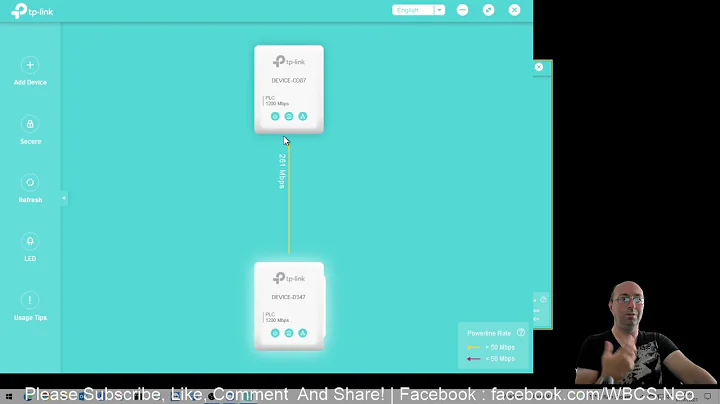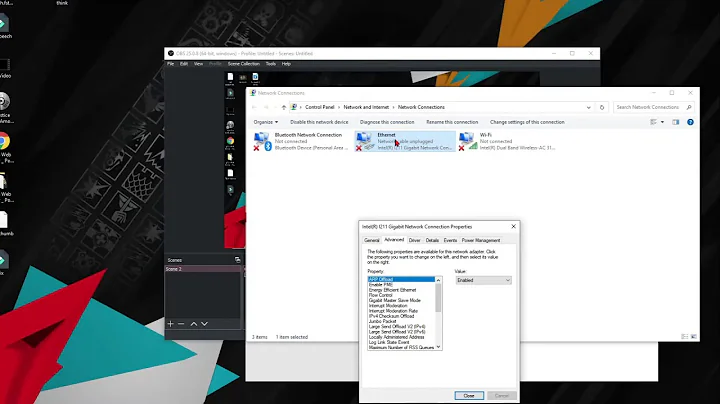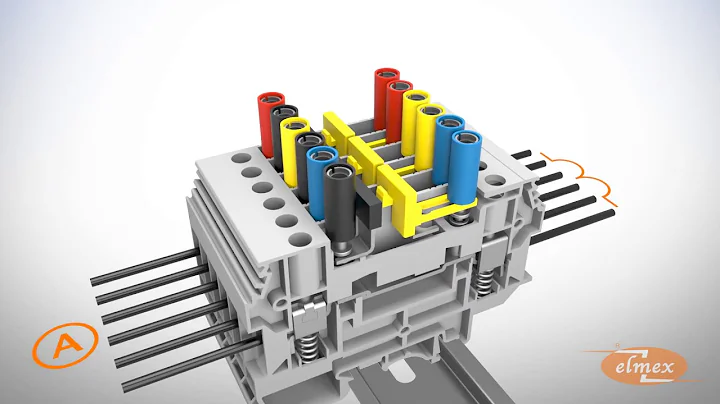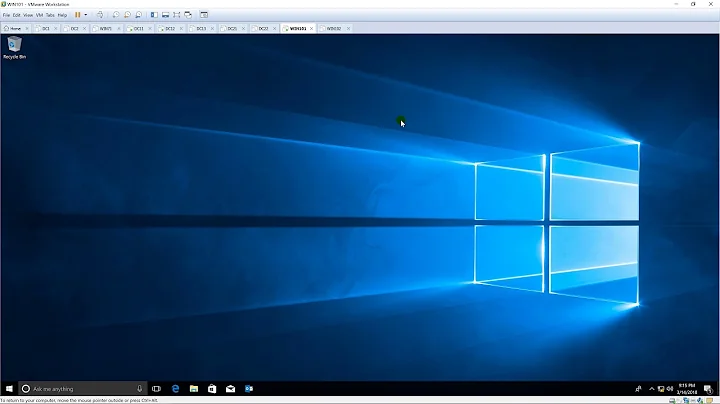How does ConnectionMultiplexer deal with disconnects?
Solution 1
Here is the pattern recommended by the Azure Redis Cache team:
private static Lazy<ConnectionMultiplexer> lazyConnection = new Lazy<ConnectionMultiplexer>(() => {
return ConnectionMultiplexer.Connect("mycache.redis.cache.windows.net,abortConnect=false,ssl=true,password=...");
});
public static ConnectionMultiplexer Connection {
get {
return lazyConnection.Value;
}
}
A few important points:
- It uses Lazy<T> to handle thread-safe initialization
- It sets "abortConnect=false", which means if the initial connect attempt fails, the ConnectionMultiplexer will silently retry in the background rather than throw an exception.
- It does not check the IsConnected property, since ConnectionMultiplexer will automatically retry in the background if the connection is dropped.
Solution 2
Yes, you need that type of verification in order to fix broken connections. Some thread safety should also be factored in as well. This is how I usually do this:
private static ConnectionMultiplexer _redis;
private static readonly Object _multiplexerLock = new Object();
private void ConnectRedis()
{
try
{
_redis = ConnectionMultiplexer.Connect("...<connection string here>...");
}
catch (Exception ex)
{
//exception handling goes here
}
}
private ConnectionMultiplexer RedisMultiplexer
{
get
{
lock (_multiplexerLock)
{
if (_redis == null || !_redis.IsConnected)
{
ConnectRedis();
}
return _redis;
}
}
}
Then I use the RedisMultiplexer property everywhere I need to call the Redis endpoint. I don't usually store the result of the GetDatabase() call because the documentation says it's a pretty lightweight call.
Related videos on Youtube
Comments
-
Gigi almost 2 years
The Basic Usage documentation for StackExchange.Redis explains that the
ConnectionMultiplexeris long-lived and is expected to be reused.But what about when the connection to the server is broken? Does
ConnectionMultiplexerautomatically reconnect, or is it necessary to write code as in this answer (quoting that answer):if (RedisConnection == null || !RedisConnection.IsConnected) { RedisConnection = ConnectionMultiplexer.Connect(...); } RedisCacheDb = RedisConnection.GetDatabase();Is the above code something good to handle recovery from disconnects, or would it actually result in multiple
ConnectionMultiplexerinstances? Along the same lines, how should theIsConnectedproperty be interpreted?[Aside: I believe the above code is a pretty bad form of lazy initialization, particularly in multithreaded environments - see Jon Skeet's article on Singletons].
-
Mike Harder about 9 yearsA big problem with this approach is that connections will be leaked until the ConnectionMultiplexer instances are cleaned up the CLR garbage collector. If the cache is under heavy load it's possible to hit the 10k connection limit. There's also no good way to call Dispose() on the old ConnectionMultiplexer, since another thread could still be trying to use it. The best approach we have found is to ignore the IsConnected property and let ConnectionMultiplexer retry the connection on its own.
-
Gigi about 9 years@MikeHarder I had this suspicion, which is why I asked the question. Thanks for confirming and clarifying.
-
GaTechThomas about 9 yearsDo you have a reference for the recommendation? I did find their MVC movie app example, but it would be helpful to have more background from the source. Here's what I found: azure.microsoft.com/blog/2014/06/05/…
-
GaTechThomas about 9 yearsIt seems that this would be the place to go: msdn.microsoft.com/en-us/library/dn690521.aspx
-
 ranieuwe over 7 yearsCurrent link seems to be azure.microsoft.com/en-us/documentation/articles/…
ranieuwe over 7 yearsCurrent link seems to be azure.microsoft.com/en-us/documentation/articles/… -
sabiland over 7 yearsSo is this pattern proper-way ?
-
MX313 over 3 yearsOld post but do you not need the isThreadSafe parameter set to true? as in: public Lazy(Func<T> valueFactory, bool isThreadSafe);
-
 Kamran Shahid over 3 yearslooks like in my case it is not retrying. can someone check stackoverflow.com/questions/65261761/…
Kamran Shahid over 3 yearslooks like in my case it is not retrying. can someone check stackoverflow.com/questions/65261761/… -
 Doc over 2 years@MX313 I know it's been a year, but in case anyone else comes this way: Lazy(Func<T>) by default assumes isThreadSafe = true and LazyThreadSafetyMode = ExecutionAndPublication. You should only need to use a constructor defining one of those if the instance initialized is not thread safe or should not allow ExecutionAndPublication. See docs.microsoft.com/en-us/dotnet/api/…
Doc over 2 years@MX313 I know it's been a year, but in case anyone else comes this way: Lazy(Func<T>) by default assumes isThreadSafe = true and LazyThreadSafetyMode = ExecutionAndPublication. You should only need to use a constructor defining one of those if the instance initialized is not thread safe or should not allow ExecutionAndPublication. See docs.microsoft.com/en-us/dotnet/api/…










